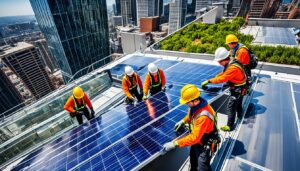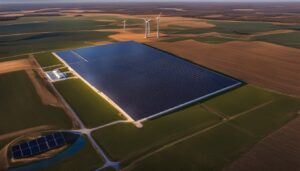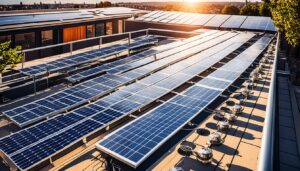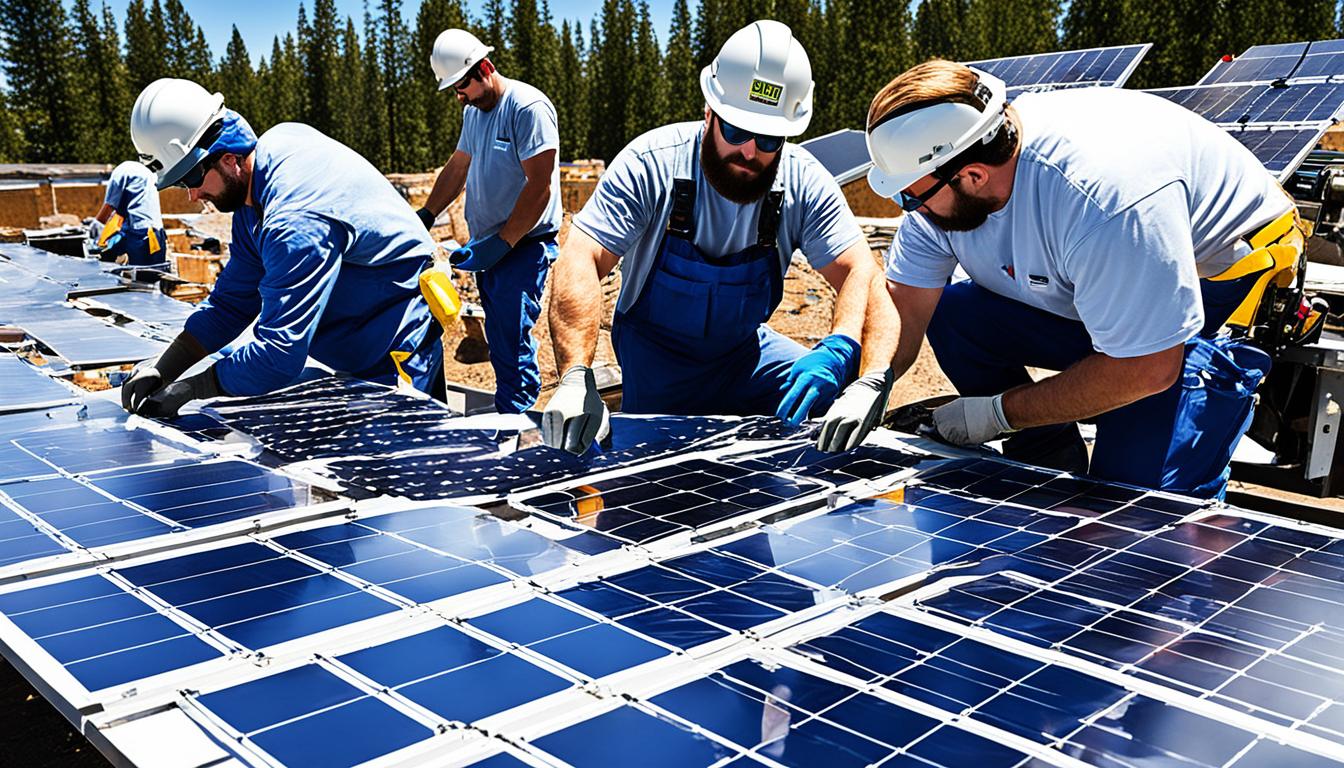
As we strive towards a sustainable future, harnessing the power of the sun has become an increasingly popular solution. Solar panels, with their ability to convert sunlight into electricity, play a crucial role in this renewable energy revolution. In this article, I will explore the fascinating world of solar panel construction and how these intricate systems work to generate clean, renewable power.
Solar panel construction involves meticulous planning and careful assembly of various components. The process starts with the selection of high-quality materials, such as silicon cells, which have the remarkable ability to absorb sunlight effectively. These cells are interconnected to form a solar module, encased in a protective glass and frame to shield them from environmental factors.
These solar modules are then combined to create a solar array, designed to capture the maximum amount of sunlight. Whether mounted on rooftops or ground-based systems, the positioning of the solar array is critical for optimal energy production.
But how exactly do solar panels work? It all starts with the solar cells within the modules. When sunlight hits these cells, the photons in the sunlight excite electrons within the silicon, creating an electric current. This direct current (DC) then passes through an inverter, which converts it into alternating current (AC), the type of electricity used in households and businesses.
Key Takeaways:
- Solar panel construction involves the careful assembly of various components.
- Solar cells, made from silicon, are responsible for converting sunlight into electricity.
- Solar arrays, comprising multiple solar modules, capture sunlight for maximum energy production.
- An inverter converts the direct current (DC) generated by solar panels into usable alternating current (AC).
- Solar panels provide a clean and renewable source of energy, reducing reliance on traditional power sources.
Key components of Solar Panels
Solar panels are composed of several essential components that work together to convert sunlight into usable electricity. Understanding the key components of solar panels is crucial for grasping how these devices harness the power of the sun. The main components of solar panels include solar cells, inverters, and solar modules.
Solar Cells
The most important component of a solar panel is the solar cell. These cells play a vital role in converting sunlight into electricity. Solar cells are typically made from silicon, a semiconducting material with unique properties that allow it to generate an electric current when exposed to light. Silicon solar cells are highly efficient and widely used in photovoltaic systems.
Solar cells are interconnected to form a solar module. Multiple solar modules are then connected in series or parallel to create an array capable of generating sufficient power.
Inverter
An inverter is another critical component of a solar panel system. The inverter is responsible for converting the direct current (DC) produced by the solar panels into alternating current (AC), which is the type of current used in most household appliances and the power grid.
The inverter ensures that the solar-generated electricity is compatible with the electrical appliances in your home or business. It also monitors and optimizes the performance of the solar panel system, ensuring maximum energy efficiency and power output.
Solar Module
The solar module, also known as a photovoltaic module, encompasses the interconnected solar cells and plays a crucial role in capturing sunlight and generating electricity. Solar modules are typically comprised of multiple layers, including a front protective glass, an encapsulant, and a backsheet.
The front protective glass filters and directs sunlight onto the solar cells, while the encapsulant provides a protective barrier and ensures the stability of the solar cells. The backsheet serves as another layer of protection against environmental factors, such as moisture and UV radiation.
Solar Panel Components Summary
To summarize, the key components of solar panels include:
| Component | Description |
|---|---|
| Solar Cells | Convert sunlight into electrical energy |
| Inverter | Converts DC to AC and optimizes system performance |
| Solar Module | Encapsulates solar cells and protects them |
Understanding the function and importance of these components is essential for harnessing the full potential of solar energy and reaping the benefits of renewable power generation.
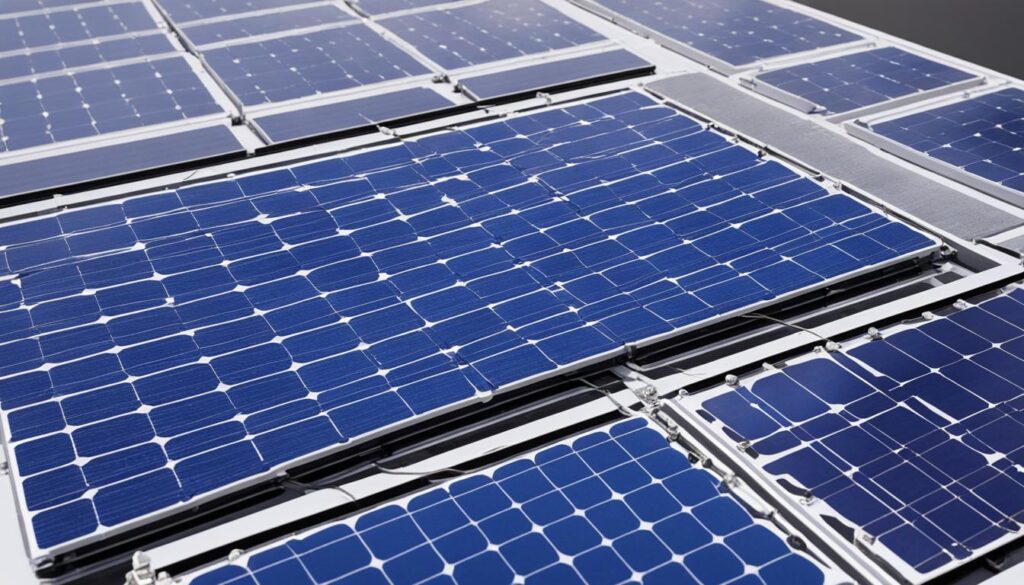
Benefits and Advantages of Solar Panels
Solar panels offer numerous benefits and advantages, making them an appealing choice for both residential and commercial properties. One of the primary benefits of solar panels is their ability to generate clean and renewable energy. Unlike fossil fuels, solar energy does not produce harmful greenhouse gas emissions, making it an environmentally friendly option. The use of solar panels promotes sustainability and contributes to a healthier planet for future generations.
In addition to being environmentally friendly, solar panels also provide financial benefits. By harnessing the power of the sun, property owners can significantly reduce their electricity bills. Solar energy is a free resource, and once the panels are installed, the cost of generating electricity becomes minimal. With solar power, individuals and businesses can save thousands of dollars over the lifespan of their solar panel system.
Another advantage of solar panels is their versatility and accessibility. They can be installed on various types of surfaces, including rooftops, ground-mounted systems, and even on carports or pergolas. This flexibility in installation options makes it possible for properties with limited space or unconventional designs to still benefit from solar energy. Additionally, numerous government incentives and rebates are available to encourage the adoption of solar panels, further reducing the cost barriers for consumers.
By embracing solar panels, individuals and businesses not only contribute to a sustainable future but also gain long-term economic and environmental benefits. Solar energy offers a reliable, clean, and renewable power source that minimizes carbon emissions, reduces reliance on fossil fuels, and provides energy independence. Investing in solar panels is not only a smart choice for the present but also a responsible investment for the future.
FAQ
How are solar panels constructed?
Solar panel construction involves the assembly of multiple components that work together to harness the sun’s energy and convert it into electricity. The process begins with the selection of high-quality materials, such as silicon cells, that have the ability to absorb sunlight. These cells are then interconnected to form a solar module, which is typically encased in a protective glass and frame. The solar modules are then combined to create a solar array, which is mounted on a structure, such as a rooftop or ground-mounted system, to capture maximum sunlight.
What are the key components of solar panels?
Solar panels are composed of several essential components. The most important component is the solar cell, which is responsible for converting sunlight into electricity. These cells are typically made from silicon, a semiconducting material that has unique properties allowing it to generate electricity when exposed to light. The solar cells are interconnected and sealed within a protective encapsulant to form a solar module.
What are the benefits and advantages of solar panels?
Solar panels offer numerous benefits and advantages, making them an appealing choice for both residential and commercial properties. One of the primary benefits of solar panels is their ability to generate clean and renewable energy. Unlike fossil fuels, solar energy does not produce harmful greenhouse gas emissions, making it an environmentally friendly option. Additionally, solar panels reduce dependence on traditional energy sources such as coal and oil, thereby contributing to energy independence and reducing the carbon footprint.

